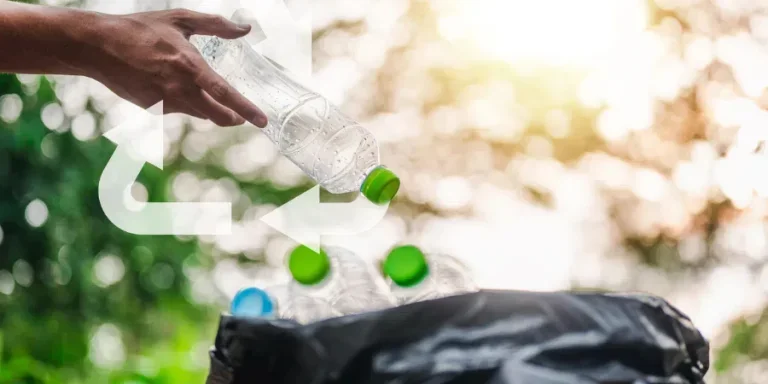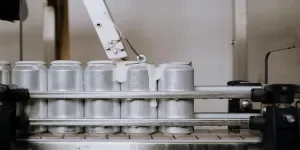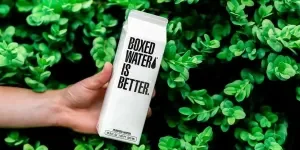Addressing the obstacles to bioplastic production and adoption is key to unlocking their full potential as an eco-friendly alternative.

The packaging industry is increasingly under pressure to adopt more sustainable practices as environmental concerns continue to rise. Bioplastics, made from renewable biological sources such as corn starch, sugarcane, or algae, are often heralded as a key solution to reducing plastic pollution.
However, despite their promise, scaling the production and usage of bioplastics is not without significant challenges. These challenges range from technological and economic barriers to environmental and logistical concerns.
Understanding these hurdles is crucial for packaging professionals seeking to incorporate bioplastics into their operations.
Limited production capacity and high costs
One of the primary challenges in scaling bioplastics is the limited production capacity. Unlike conventional plastics, which benefit from decades of established infrastructure and economies of scale, bioplastics are still in a relatively nascent stage of development.
The production facilities for bioplastics are few and far between, often operating at a smaller scale compared to traditional plastic manufacturers. This limited capacity results in higher production costs, which are then passed down the supply chain.
High costs are a significant deterrent for many companies in the packaging industry, particularly those operating on thin margins.
The raw materials used in bioplastics, such as sugarcane or corn, can also fluctuate in price due to agricultural conditions, further adding to the economic unpredictability.
For bioplastics to become a viable alternative to conventional plastics, substantial investment is required to expand production capabilities and drive down costs.
This investment is often slow to materialise due to the uncertain return on investment, especially when traditional plastics remain cheaper and more readily available.
Environmental and sustainability concerns
While bioplastics are marketed as a greener alternative to conventional plastics, they are not without their environmental drawbacks. One significant concern is the land use associated with growing the raw materials needed for bioplastics.
Large-scale cultivation of crops like corn or sugarcane for bioplastic production can lead to deforestation, loss of biodiversity, and competition with food production.
This has sparked debate about the true environmental impact of bioplastics, particularly in regions where agricultural land is already under pressure.
Moreover, not all bioplastics are biodegradable, and even those that are may require specific conditions to decompose effectively. For instance, some biodegradable plastics need industrial composting facilities to break down, which are not widely available.
This means that bioplastics could still contribute to plastic pollution if they end up in the wrong waste stream or if the necessary composting infrastructure is lacking.
As a result, the environmental benefits of bioplastics are not as straightforward as they might seem, and careful consideration is needed to assess their true sustainability.
Logistical challenges in the supply chain
Incorporating bioplastics into the packaging industry also presents several logistical challenges. The supply chain for bioplastics is not as well-established as that for conventional plastics, leading to issues with availability, consistency, and quality.
This can create difficulties for packaging companies that require a reliable and steady supply of materials to meet production deadlines.
Another logistical hurdle is the integration of bioplastics into existing recycling and waste management systems. Most recycling facilities are designed to handle conventional plastics, and the introduction of bioplastics can complicate the sorting and recycling process.
If bioplastics are mixed with conventional plastics, it can lead to contamination, reducing the quality of recycled materials and potentially rendering entire batches unusable.
This poses a significant challenge for municipalities and waste management companies that are already struggling to cope with the complexities of plastic recycling.
Furthermore, the global nature of the packaging industry means that supply chains often span multiple countries with varying regulations and standards regarding bioplastics.
This can lead to inconsistencies in the quality and certification of bioplastics, complicating their adoption on a large scale. Packaging professionals must navigate these regulatory landscapes carefully to ensure compliance and maintain the integrity of their products.
Consumer perception and market demand
Another factor influencing the scaling of bioplastics is consumer perception and market demand. While there is growing awareness of the environmental impact of plastics, consumer understanding of bioplastics remains limited.
Many consumers are unaware of the differences between bioplastics and conventional plastics or the complexities involved in their disposal. This lack of awareness can lead to confusion and scepticism, which in turn affects market demand.
Packaging professionals must play a role in educating consumers about the benefits and limitations of bioplastics. Clear labelling and communication about the proper disposal of bioplastics are essential to prevent misuse and ensure that their environmental benefits are realised.
However, educating consumers is not an easy task, and it requires a concerted effort from manufacturers, retailers, and policymakers.
In conclusion, while bioplastics offer a promising alternative to conventional plastics, significant hurdles remain in scaling their production and adoption in the packaging industry.
Addressing these challenges requires investment in production capacity, careful consideration of environmental impacts, and overcoming logistical and regulatory barriers.
Furthermore, educating consumers about the benefits and limitations of bioplastics is crucial to driving market demand. Only through a coordinated effort across the industry can bioplastics reach their full potential as a sustainable packaging solution.
Source from Packaging Gateway
Disclaimer: The information set forth above is provided by packaging-gateway.com independently of Alibaba.com. Alibaba.com makes no representation and warranties as to the quality and reliability of the seller and products. Alibaba.com expressly disclaims any liability for breaches pertaining to the copyright of content.




